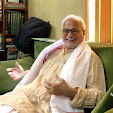Markets Are At the Core of All Human Relationships
from Adam Smith's Lost Legacy by Gavin Kennedy
The fact is that markets long preceded capitalism, a point completely missed by Karl Polanyi (‘The Great Transformation', 1944), who considered markets to be part of the title of his book and occurring only in mid-19th century, is well established by Adam Smith (among many others, contemporaries and those who preceded him) and by modern research (see Morris Silver, Economic Structures of Antiquity, Greenwood Press, 1995, ‘Markets in antiquity: the challenge of the evidence’ pp 95-177).
That several respectable modern authors have followed Karl Polanyi’s theory is regrettable.
Adam Smith recognised markets as being an ancient institution, indeed, he was for some reason more accurate than he realised (or than Polanyi gave him credit) when he introduced in Wealth Of Nations that most prescient of ideas, that describes his iconic statement of ‘the propensity to truck, barter, and exchange’:
‘Whether this propensity be one of those original principles in human nature, of which no further account can be given; or whether, as seems more probable, it be the necessary consequence of the faculties of reason and speech, it belongs not to our present subject to enquire’ (WN I.ii.2. p 25).
Exchange, individual, bilateral, and social goes back into pre-history and covers markets in language development, ideas, and knowledge, law and justice, customs, modes of living and subsistence, moral sentiments, international relations and, in fact, all aspects of human relations.
***
'Holey Moley' and Myth of the Invisible Hand
from Adam Smith's Lost Legacy by Gavin Kennedy... I do have fairly strong views on the use of the metaphor of the ‘invisible hand’, as readers of Lost Legacy will recognize...
I hope that we may reach a situation where the misuse, misattribution and misleading promotion of the metaphor is sidelined in economics at an early date. Failing that goal, I hope that its automatic tagging as an idea of Adam Smith’s is at least neutralized in the near future, which presently gives a respectable cover for modern economists to accord it an authority that it does not deserve, without realizing how ridiculous they make themselves amidst their insistence of their claims to the status of a science.
Nobody has yet accounted for the invisible hand in their use of it in markets, nor how it is alleged to operate as a disembodied body part, nor even what it adds to the theory of markets. Adam Smith knew better than to make such a claim for the metaphor, which he used to
- a) describe as ‘pusillanimous superstition’ by pagan savages (History of Astronomy);
- b) to give literary flair to the behaviour of rich landlords feeding the ‘thousands they employed’ and their families (they could do no other and survive themselves) (Moral Sentiments), and
- c) to refer to the risk-avoidance by domestic merchants (Wealth Of Nations).
In none of the only three cases in which he used the metaphor of the invisible hand did he include its use in his theory of markets.

Of course markets are an inherent part of the structure of all human cultures.
ReplyDeleteBut what has that got to do with capitalism---the most destructive meme ever invented by humankind?